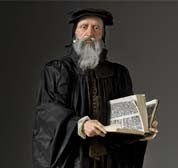
Memorial Day, the last Monday of May, is the day we honor Americans who gave their lives in military service.
The holiday was originally called Decoration Day and honored soldiers who had died during the Civil War. Immediately after the war, various towns in the North and South began to set aside days to decorate the soldiers’ graves with flowers and flags. Those earliest memorial observances occurred in Waterloo, New York; Columbus, Mississippi; Richmond, Virginia; Carbondale, Illinois; Boalsburg, Pennsylvania, and several other places.
The first widespread observance of Decoration Day came on May 30, 1868, which Maj. Gen. John A. Logan proclaimed as a day to honor the dead. General James Garfield (later the twentieth U.S. president) gave a speech at Arlington National Cemetery in remembrance of fallen soldiers, saying that “for love of country they accepted death, and thus resolved all doubts, and made immortal their patriotism and their virtue.” Afterward, 5,000 people helped decorate the graves of more than 20,000 Union and Confederate soldiers.
Over the years the day became an occasion to remember the dead in all American wars, and came to be known as Memorial Day.
On the Thursday before Memorial Day, in a tradition known as “Flags-in,” the soldiers of the 3rd U.S. Infantry place small flags before more than a quarter million gravestones at Arlington National Cemetery. They then patrol twenty-four hours a day to make sure each flag remains standing throughout the weekend. On Memorial Day the president or vice president lays a wreath at the Tomb of the Unknown Soldier in the cemetery.
According to the U.S. flag code, American flags should be flown at half-staff until noon on Memorial Day, then raised to the top of the pole. At 3:00 p.m. local time, all Americans are asked to pause for a moment of remembrance.
American History Parade
1539 - Spanish explorer Hernando de Soto lands in Florida.
1806 - In Kentucky, Andrew Jackson kills lawyer Charles Dickenson in a duel for allegedly insulting Jackson’s wife.
1868 - Memorial Day is widely observed for the first time.
1896 - In New York City the first recorded car accident occurs when a motor wagon collides with a bicycle.
1911 - Ray Harroun wins the first Indianapolis 500 auto race.
1922 - The Lincoln Memorial is dedicated in Washington D.C.
1958 - Unidentified soldiers killed in World War II and the Korean War are buried at Arlington National Cemetery.
The American Patriot's Almanac: Daily Readings on America
Labels: History
















